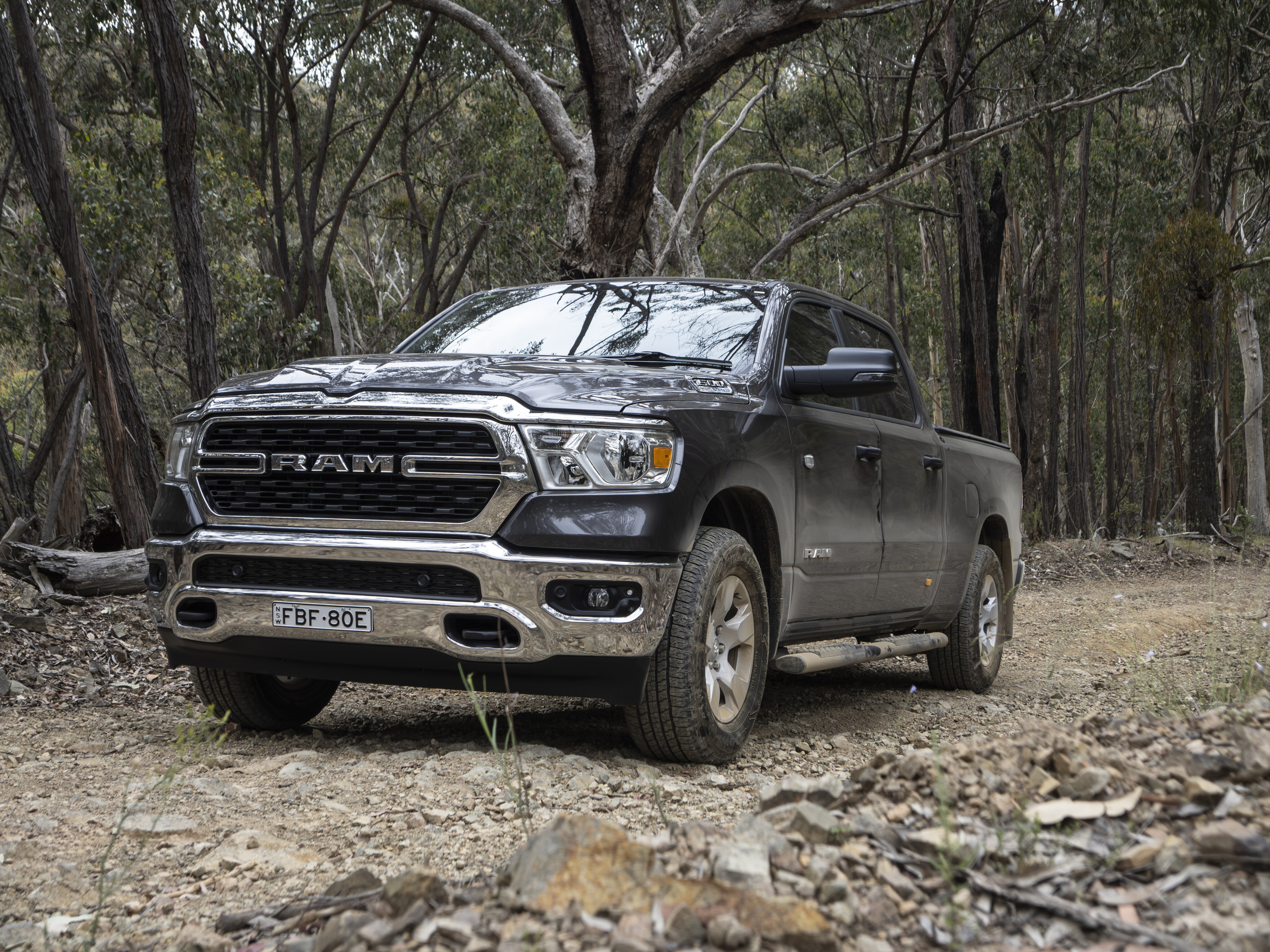
Things we like
- Quiet and refined driving
- Sweet V8 engine
- Interior comfort and space
Not so much
- Low payload
- Small A/V screen
- No seat height adjustment
Ram Trucks Australia (RTA) has introduced the Ram 1500 Big Horn as its entry level into Ram ownership in Australia. This comes as the older DS series of Ram 1500s is in the last stages of run-out sales, and the 1500 fleet will exclusively comprise the newer generation DT vehicles.
This means that it will now cost buyers at least $119,950 +ORC to get into a new Ram from RTA, and Ram will no longer offer the cheapest full-size American pickup truck in Australia. That title now goes to the Ford F150 SWB XLT, which starts at $106,950 +ORC.
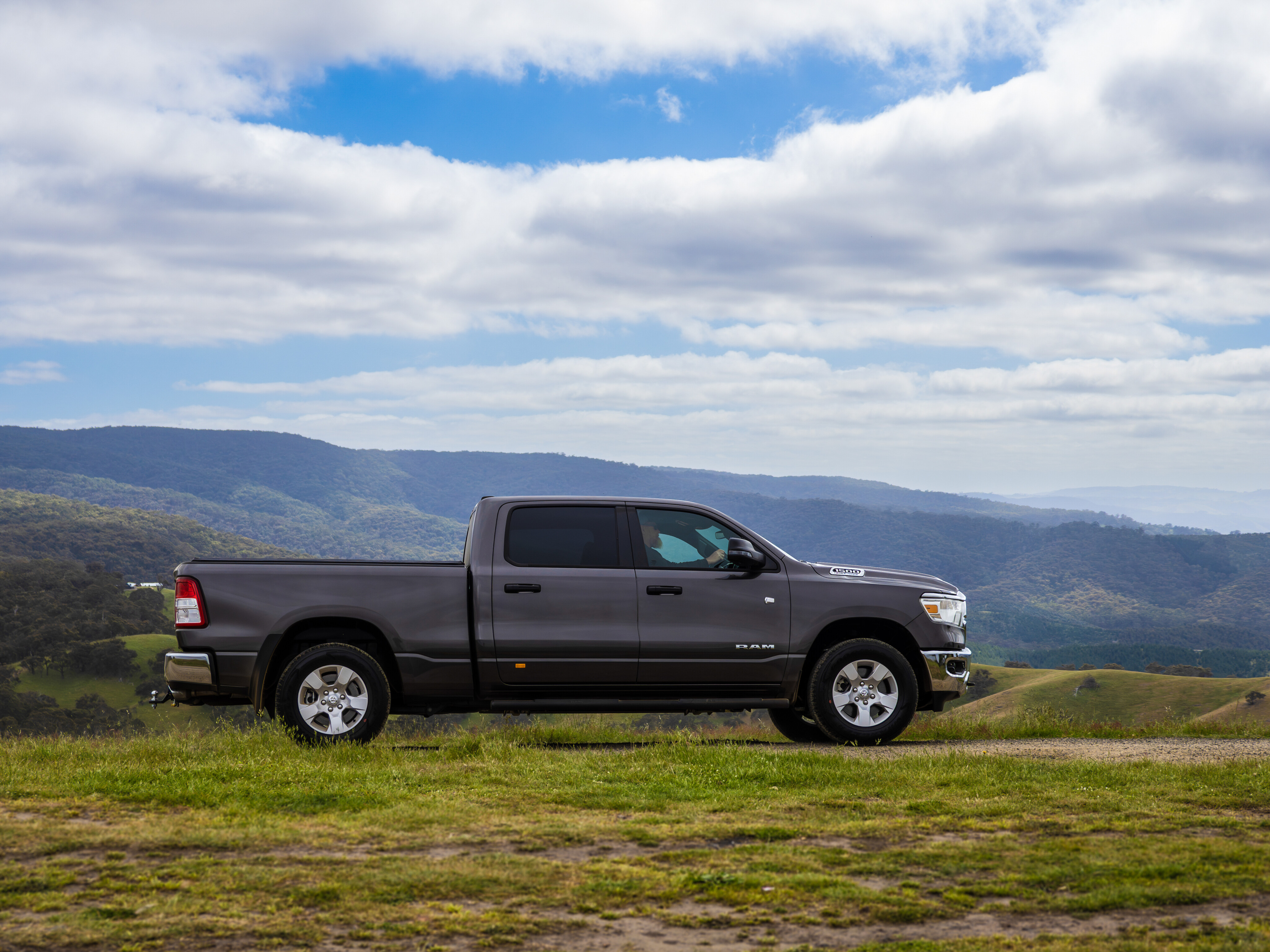
Yep, gone are the days when you could get into a Ram Express for less than $90k and, in fact, these days you won’t get into any new full-size pickup truck from any of the three factory-backed importers for less than $100k.
The more affordable DS model Rams went a long way to helping RTA become the biggest factory-backed seller of American pickups in this country, with close to 25,000 units being sold here since 2015. We say factory-backed as there are plenty of companies importing American vehicles into Australia, and have been doing it a lot longer than the factory-backed operations. Only RTA (Ram), GMSV (Chevrolet) and Ford Australia, however, import and convert vehicles with support from the OEMs in Detroit.
JUMP AHEAD
- What do you get?
- Powertrain and performance
- Safety features
- Weights and capabilities
- Warranty
- VERDICT
- Specs
What do you get?
The vehicle on test here is the long wheelbase version of the Big Horn, which starts at $120,950.
The extra $1000 spend extends the wheelbase by 226mm, and the cargo bed from 1700mm to 1930mm in length. The Big Horn uses the Double-Cab body which is bigger than the Quad-Cab offered on some models, and this offers more rear seat space. While there’s a seat in the centre of the front row, there is no seat belt fitted there, so unfortunately this model is sold as a five-seater only in Australia.
The Big Horn might represent the new entry point to Ram ownership but it doesn’t feel like it in the way it drives. The DT is a much more advanced vehicle over the old DS even if it does share the same V8 engine and eight-speed transmission – it delivers a quieter and more refined driving experience.
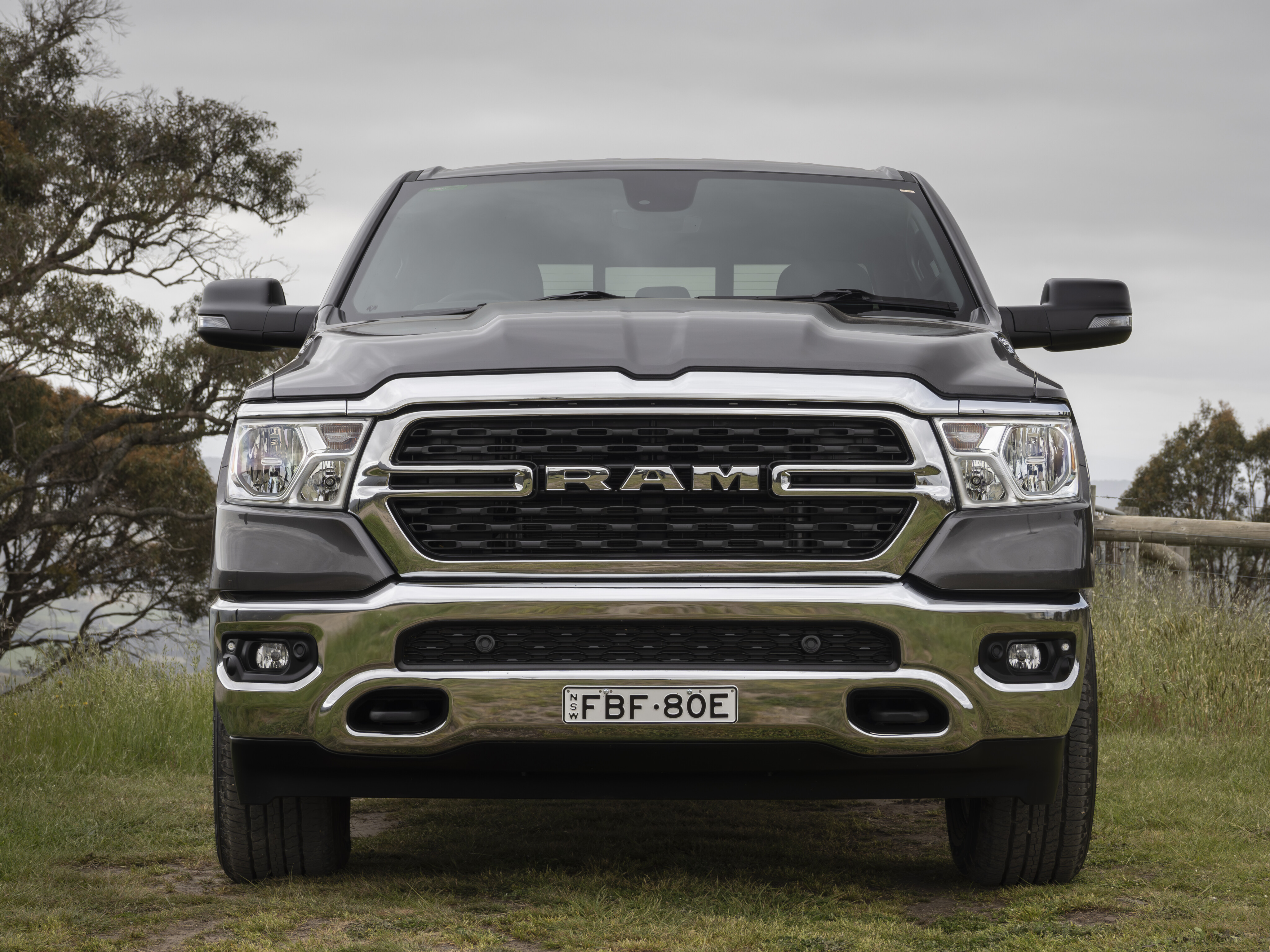
In fact, if we hadn’t driven the Ram Limited recently, with its massive centre screen and acres of leather trim, we wouldn’t think we were missing out on much in this lower-grade model. Having said that, operating the single-zone manual airconditioning feels like a throwback to the 80s, and the 213mm centre a/v screen is relatively small, but it’s still practical and usable, and includes wireless CarPlay and Android Auto connections, so the Big Horn’s interior is still well equipped.
The cloth covered seats (heated up front) offer plenty of space but the lack of height adjustment on the driver’s seat is a particular annoyance, as it had me sitting too high in the cabin and looking out though the top part of the windscreen.
The front centre seat that’s not really a seat folds down to give a massive multi-function centre console with many layers of storage inside it. In fact, there are ample storage areas inside the cabin including huge door pockets and cubby bins under the floor in the rear footwell.
The flat rear footwell has four tie down points in it so you can secure luggage or other items there, and with the rear seat folded up the space in the back is very usable for cargo. With the seat in use the space provides abundant legroom for passengers and the cabin width will comfortably accommodate three adults across its generous width.
Powertrain and performance
Like the other Ram 1500s sold in Australia (except the TRX), the Big Horn is powered by a 5.7-litre Hemi V8 petrol engine that features a mild hybrid system for improved efficiency.
This system uses 48-volt electrics and a belt-driven generator to ease stop/start operation, and is able to send torque back to the crankshaft for brief intervals for a mild boost in performance. While the power and torque figures remain the same at 291kW and 556Nm with and without the E-Torque system, it does help the ignition stop/start function feel almost seamless, and for once I didn’t find myself wanting to switch it off.
Something I wish I could change however is the transmission selector dial on the dash. While the performance of the eight-speed ZF-sourced transmission is relatively flawless, operating the selector dial is fiddly, especially when you are doing multi-point U-turns on narrow tracks. Manual gear selection is also fiddly, as the tiny buttons on the steering wheel hub are not suitably positioned… unless you have freakishly long thumbs, that is!
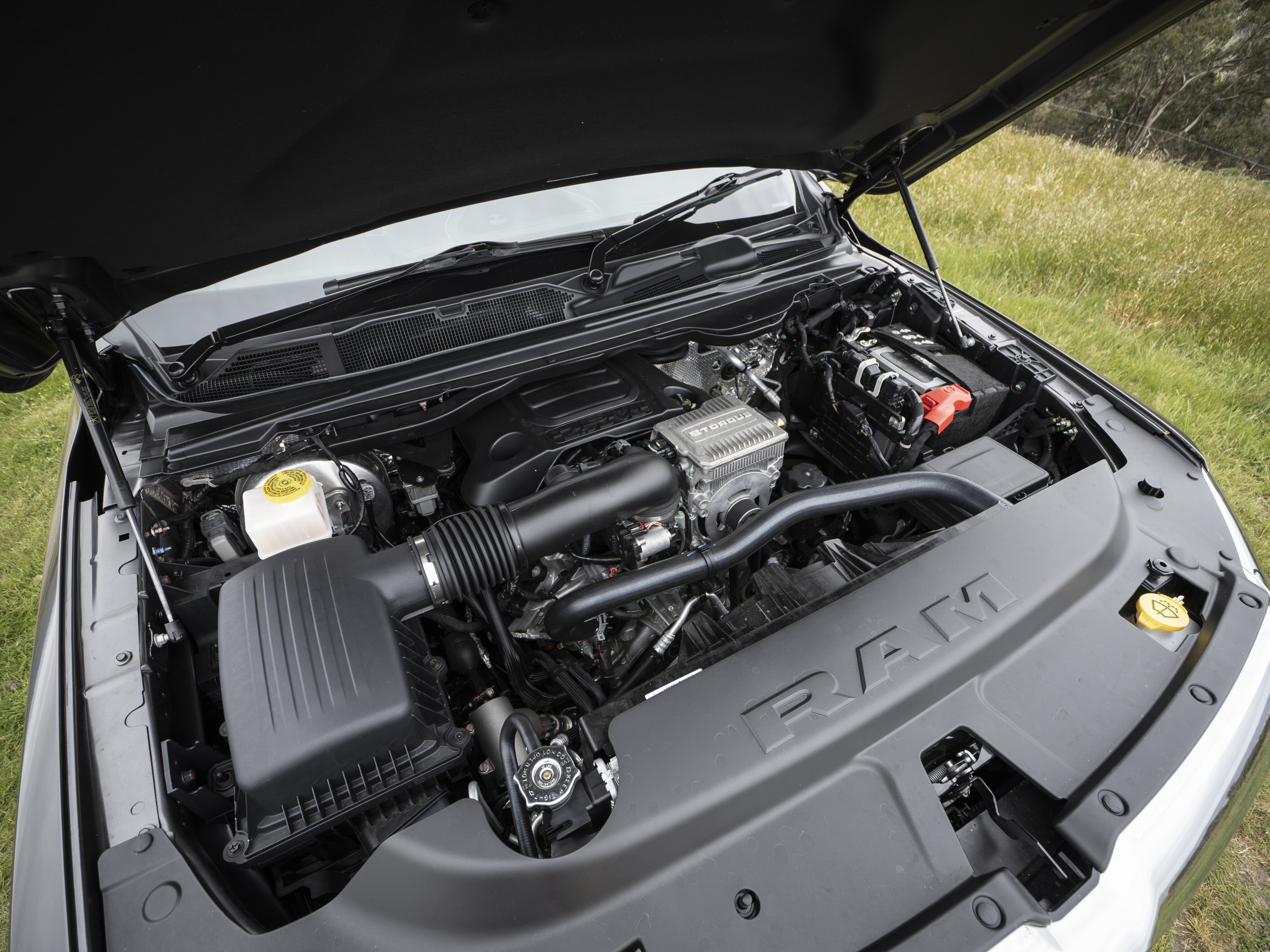
The V8 and auto deliver smooth and effortless performance considering the size of the Ram Big Horn, and the accompanying soundtrack is a sweet V8 bellow when you plant your foot. It’s worth noting that the Hemi V8 used in the 1500 has less power than the Silverado’s 6.2-litre V8, and less torque than the F150’s turbocharged V6 engine, but it still delivers plenty of grunt for its intended use.
A claimed 12.2L/100km fuel consumption on the combined cycle for the V8 Ram is a little optimistic, but during our week of mixed driving it still returned a more-than-respectable 13.6L/100km.
Those who want a Ram V8 should take note that Ram is following Ford’s lead and will replace the naturally aspirated V8 engine with a turbocharged six-cylinder petrol engine. The twin-turbocharged inline six has already debuted in the Jeep Grand Wagoneer and is due to find its way under the hood of the 2025 model year Ram. While it promises improved efficiency and performance, like the F150, it will lack that V8 appeal.
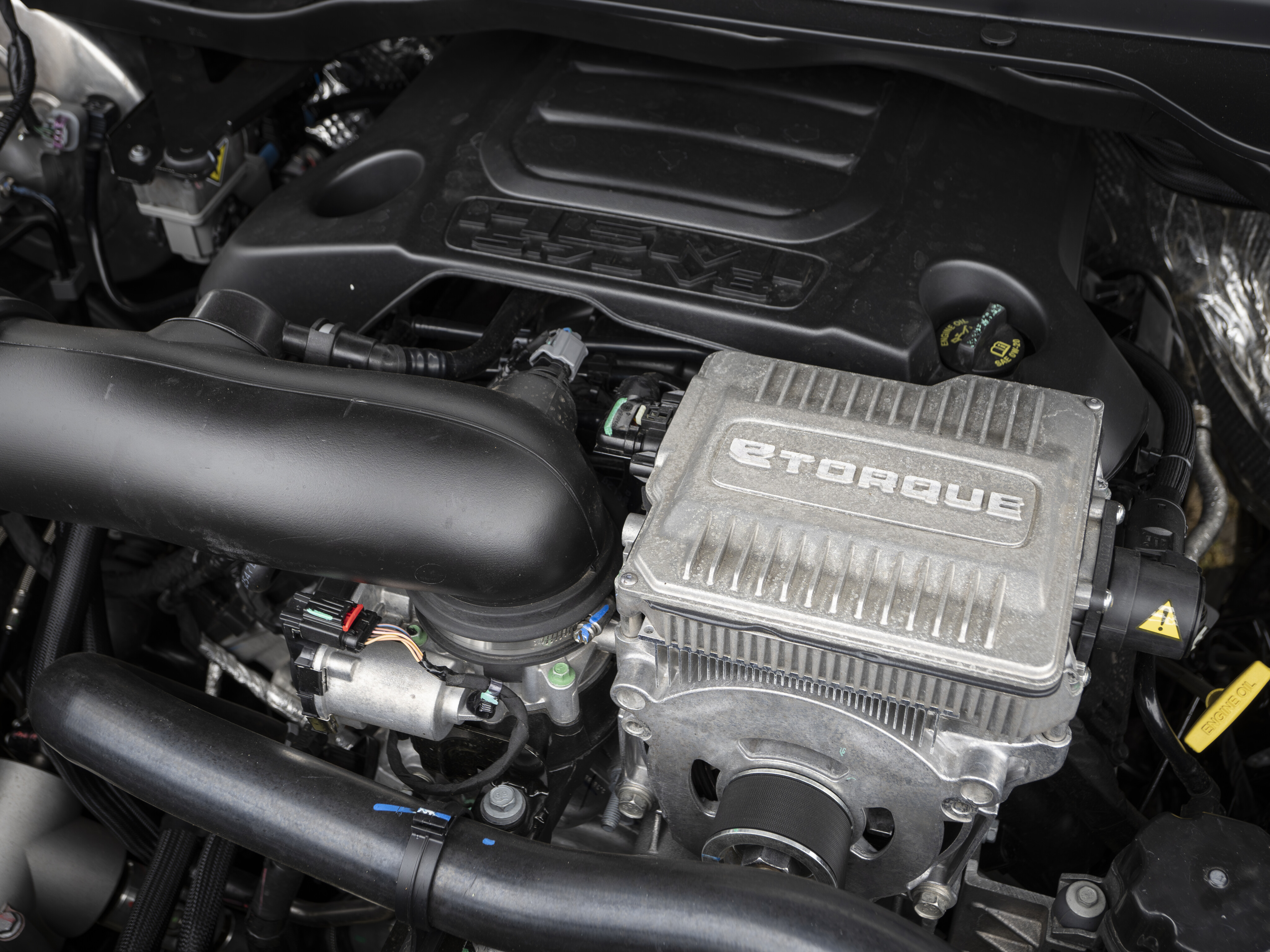
When we drove the Ram Limited we criticised its ride and handling over gravel and broken road surfaces thanks to its ludicrous 22-inch diameter wheels with low profile tyres and air suspension, but we are happy to report the Big Horn, on its steel coil springs and 275/65R18 tyres, showed no such aggravation, and offers a smooth and supple ride without wallowing or pitching. Such low profile tyres as those on the Ram Limited have no place on a work truck, let alone one that will be driven off road.
An area in which we did find the Big Horn lacking was the poor performance of its halogen headlights, even to the extent I was switching them off and back on to make sure they were working. This was driving on a multi-lane suburban highway where the cars around me offered more light ahead of the Ram. Ram model grades above the Big Horn are equipped with LED headlights.
Safety features
The Big Horn retains the safety features of the DT range including forward collision warning with active braking (AEB), lane-departure warning, rear cross-traffic alert, front and rear ParkSense assistance, trailer sway control, adaptive cruise control, blind-spot monitoring and six airbags.
The rear ParkSense system automatically brakes the truck when reversing too close to an object or person, and it is a great feature considering the number of kids that are hit in driveways or carparks, but it’s annoying on tracks when reversing as it even brakes for long grass, dirt banks and large puddles. Thankfully, you can switch it off in the bush or when hooking up a trailer, but we’d leave it active at other times.
Weights and capabilities
Full-size pickups might be big but that doesn’t mean they can haul heavy loads. These 1500 class trucks have a lower payload than most of the popular midsize 4x4 utes like HiLux, Ranger and Triton.
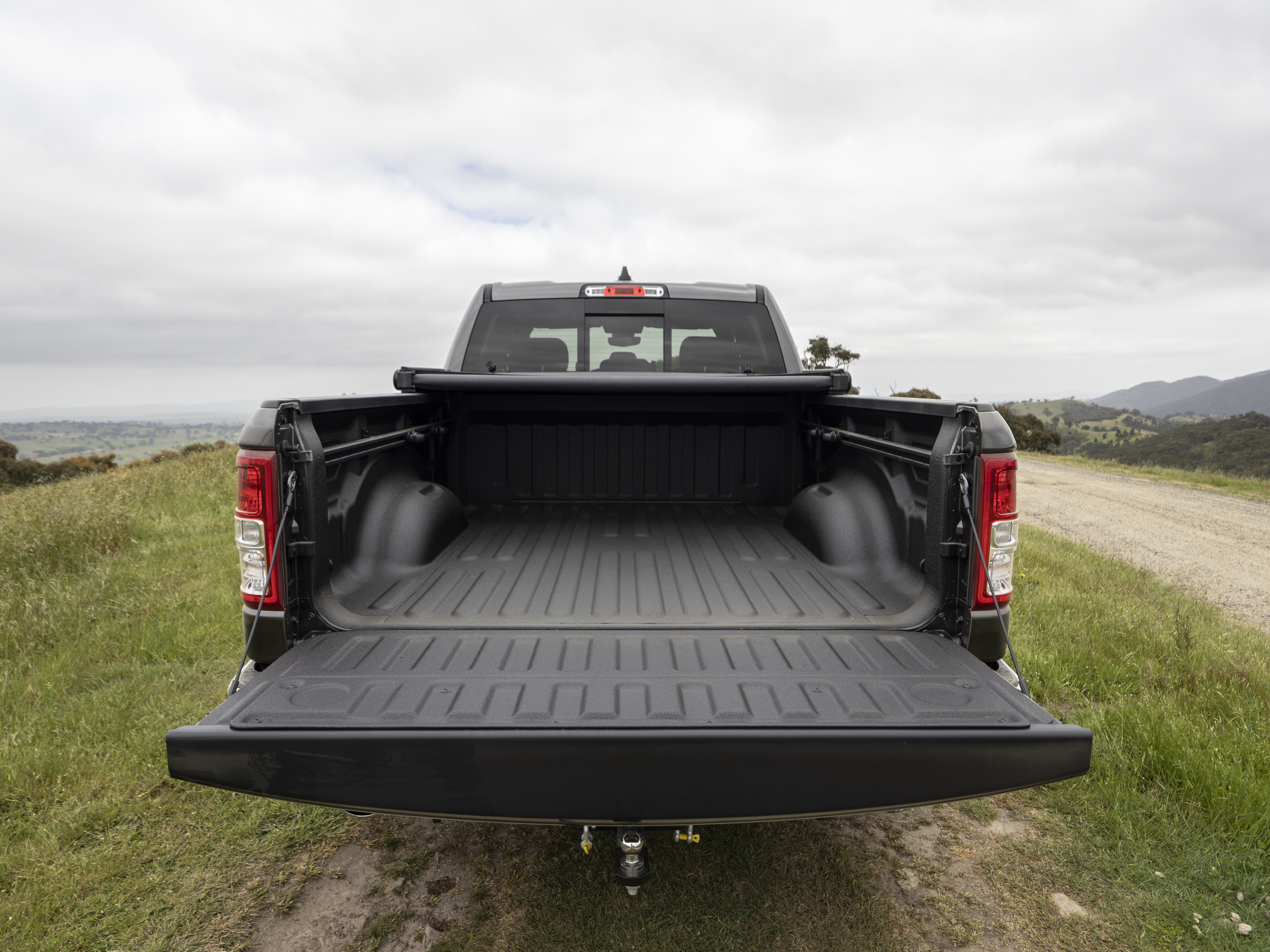
The Ram Big Horn has the highest payload in its class at 878kg, while the Ram Limited can carry just 701kg, the Ford F150 XLT LWB 794kg, and the Chevrolet Silverado LTZ 757kg.
The Big Horn matches the other 1500 trucks for towing with a standard 3500kg rating, or 4500kg on a 70mm towball. But with a 7713kg GCM, if you were to hitch up a 4500kg trailer with a 10 percent ball weight of 450kg, you would only have 13kg left for driver and any other passengers or cargo. While we wouldn’t expect many people to tow close to the 4500kg limit, what the Ram will do well is tow 3000kg to 3500kg trailers a lot better and safer than any of the midsize utes ever could, as they would be at their legal limits.
Warranty
Like the Silverado from GMSV, the RTA-sold Ram only comes with a three-year/100,000km warranty (plus three-year roadside assist), while Ford offers the same five-year/unlimited kilometre warranty on the F150 as the rest of its vehicle range in Australia.
Verdict
At $121k the entry-level Ram 1500 Big Horn is by no means cheap.
However, it looks like decent value for money when you consider it’s another $7k step up to the Ram 1500 Laramie, and the Ram Limited will now set you back more than $154k. In between them is another new model, the Ram 1500 Laramie Sport, which is priced at $137,000.
Thankfully the Big Horn doesn’t feel cheap thanks to its refined driving experience, standard features and the feel of its thick leather-covered steering wheel. While it might not be the cheapest full-size truck offering in Australia anymore, the Big Horn is a huge step up from the old DS Ram Express.
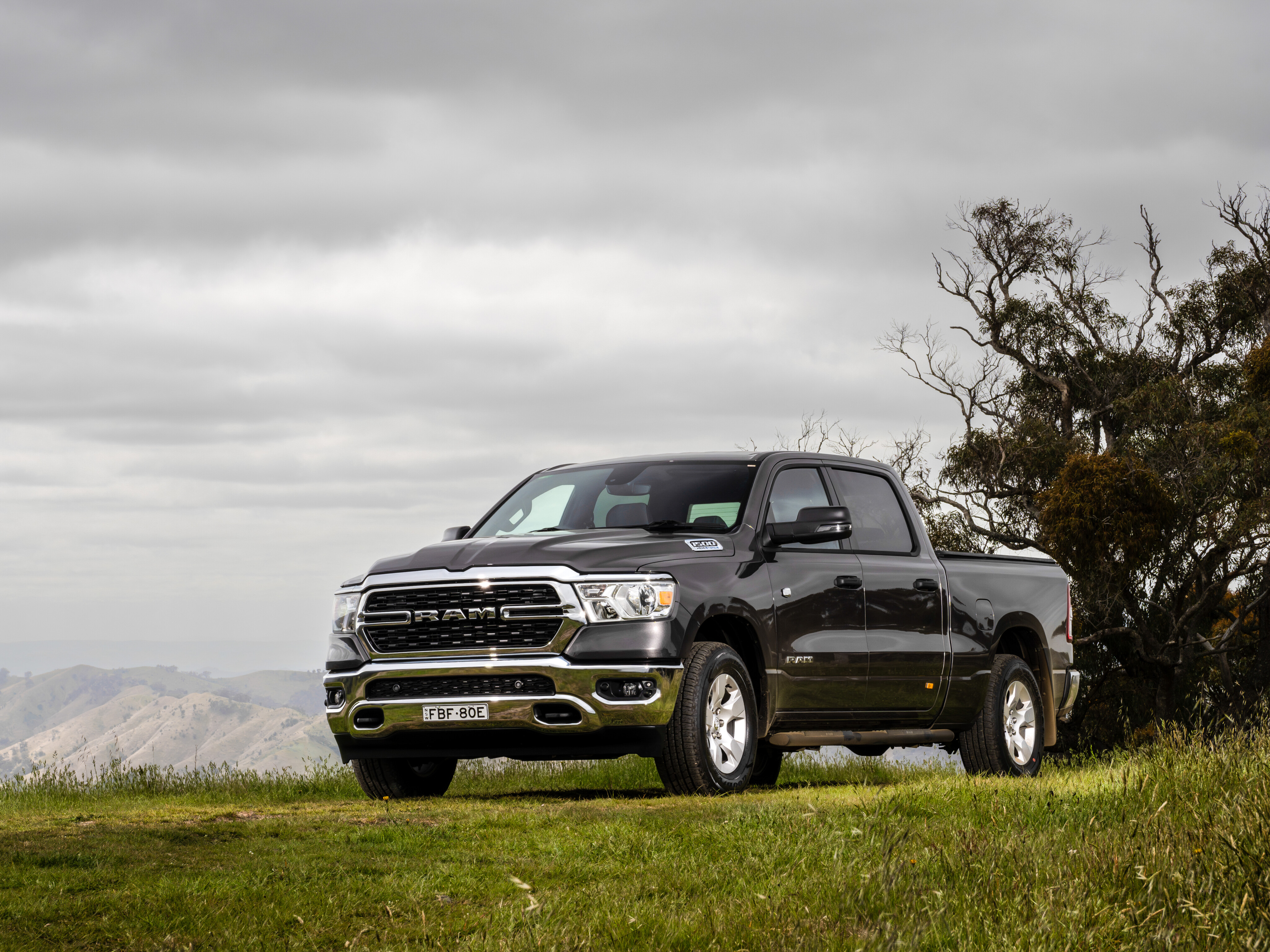
Sure, it lacks the big screen, leather trim and climate control of the higher-specification models, but the Big Horn isn’t missing anything you really need. It keeps all the essentials like the huge cabin with its massive rear seat space, large cargo bed, V8 performance and refined ride quality. And just as important for anyone heading off smooth sealed roads, it’s not restricted by the Limited’s 22-inch wheels and air suspension.
The Big Horn arrives at the perfect time to compete with the new F150 from Ford and to reinforce Ram’s dominance of the sector in the face of new competition.
Specs
| 2024 Ram 1500 Big Horn | |
|---|---|
| Price | $120,950 +ORC |
| Engine | OHV petrol V8 with mild hybrid system |
| Capacity | 5854cc |
| Max power | 291kW @ 5800rpm |
| Max torque | 556Nm @3950rpm |
| Transmission | 8-speed automatic |
| 4x4 system | On demand with high and low range |
| Crawl ratio | 48.74:1 |
| Construction | 4-door ute body on ladder chassis |
| Front suspension | IFS with coil springs |
| Rear suspension | Live axle with coil springs |
| Tyres | 275/65R18 on alloy wheels |
| Kerb weight | 2750kg |
| GVM | 3450kg |
| GCM | 7713kg |
| Towing capacity | 4500kg (on a 70mm towball) |
| Payload | 878kg |
| Seats | 5 |
| Fuel tank | 98L |
| ADR fuel consumption | 12.2L/100km |
| On test fuel consumption | 13.6/100km |
| Approach angle | 24.5° |
| Ramp-over angle | 22.0° |
| Departure angle | 23.3° |
| Ground clearance | 221mm |
| Wading depth | N/A |
Things we like
- Quiet and refined driving
- Sweet V8 engine
- Interior comfort and space
Not so much
- Low payload
- Small A/V screen
- No seat height adjustment



COMMENTS